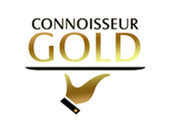Gold leaf Across the World - Malta
- by sam@wrightsoflymm.co.uk User
Edible gold leaf has a long and fascinating history that intertwines luxury, symbolism, and culinary innovation. Across Malta, the use of gold leaf, especially 24 carat and 23 carat varieties, reflects both a reverence for tradition and a flair for contemporary presentation. Though gold has long been associated with wealth and divinity in many cultures, Malta's unique position in the Mediterranean made it a cultural crossroads where eastern opulence met western refinement. This dynamic influenced how gold leaf and other edible precious metals like gold flakes, silver flakes, gold dust, and silver dust were perceived and utilized.
Historical Roots
The use of edible gold can be traced back thousands of years. In ancient Egypt, gold was consumed for its supposed healing properties and its ability to channel divine energy. The Romans too believed in the medicinal value of gold, ingesting it in small quantities to treat ailments and prolong life. During the Middle Ages and Renaissance in Europe, gilded food and drink became a symbol of extravagance among the elite. Malta, governed at various times by the Phoenicians, Romans, Arabs, and later the Knights of St. John, absorbed much of this cultural heritage.
The Knights of St. John, in particular, left a lasting impact on Maltese culture. Known for their opulence and ceremonial displays, they likely influenced the use of edible gold in celebratory banquets and religious feasts. The tradition of incorporating gold leaf or gold flakes into food may have gained traction in Malta during this period, symbolizing purity, divine blessing, and the prosperity of the Order.
Contemporary Uses
In modern Malta, the use of edible 24 carat and 23 carat gold leaf has seen a resurgence, particularly in high-end restaurants, boutique hotels, and luxury confectioneries. Malta's thriving wedding industry also incorporates edible gold in elaborate cakes and desserts. Gold is often chosen not just for its visual appeal but for the sense of opulence and celebration it brings to special occasions.
Gold leaf is usually applied in extremely thin sheets that are tasteless and safe to consume, provided it is genuine edible gold—generally 24 carat, or occasionally 23 carat when alloyed very slightly to increase durability. It's used to adorn truffles, pastries, chocolates, and even cocktails. You might find a handcrafted limoncello garnished with gold flakes, or a dark chocolate mousse dusted lightly with gold dust for an extra shimmer.
Similarly, silver leaf, silver dust, and silver flakes also make appearances in Maltese gastronomy, often paired with white desserts or pastel-coloured pastries to evoke elegance and sophistication. Unlike gold, silver leaf tends to be used more sparingly in food as it's more reactive and sometimes less well-tolerated, although still generally considered safe.
Symbolism and Appeal
Beyond its decorative qualities, gold leaf carries symbolic weight in Maltese culture. It is often associated with religious festivities, especially during Christmas and Easter, where culinary traditions are deeply intertwined with spiritual significance. Edible gold and silver, particularly gold dust and silver flakes, are used to elevate sweets and confections served during these times, offering both aesthetic pleasure and a subtle nod to Malta’s sacred traditions.
In the tourism sector, gold-covered dishes are marketed as a luxury experience. High-end Maltese restaurants often feature signature dishes such as foie gras with gold flakes, or seafood risotto topped with a delicate sheet of gold leaf, catering to affluent visitors seeking a lavish dining experience. This trend aligns with the global fascination with edible gold as a status symbol—one that Malta has embraced while infusing it with local flavour.
Conclusion
Edible gold in Malta is more than a culinary trend—it's a bridge between the island’s rich past and its cosmopolitan present. From the lavish feasts of the Knights of St. John to the modern fusion dishes found in Valletta’s Michelin-starred restaurants, 24 carat gold leaf, 23 carat gold flakes, silver flakes, gold dust, and silver dust continue to embellish Maltese cuisine with timeless elegance and a touch of gilded grandeur.





